UBJ - Ahead of its planned launch in February 2024, NASA mission officials have been working with a diverse group of applied scientists and environmental experts, gearing up for the vast array of benefits that PACE data is expected to bring to applied real-world scenarios. The Early Adopter program of PACE is an initiative designed to incorporate scientific findings into commercial, environmental, and policy-making endeavors, all aimed at societal advancement.
News
Early Adopters of NASA's PACE Data to Study Air Quality, Ocean Health
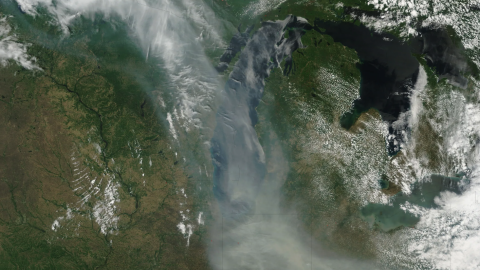
NASA - From the atmosphere down to the surface of the ocean, data from NASA’s PACE (Plankton, Aerosol, Cloud, ocean Ecosystem) satellite benefits ecosystems, human health, and underrepresented communities.
Why This NASA Satellite is Studying Plankton
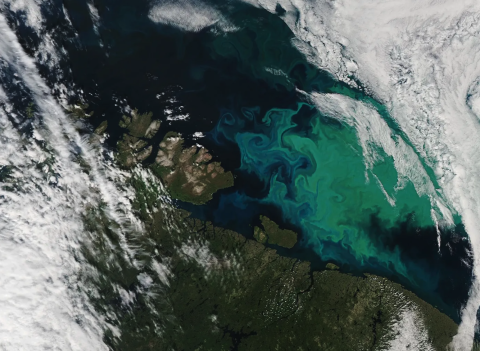
Science Friday - Did you know you can see plankton … from space? Earlier this year, NASA launched a satellite to do exactly that. It’s called PACE, which stands for Plankton, Aerosol, Cloud, and ocean Ecosystem, and NASA hopes that the satellite can tell us more about how these tiny creatures interact with Earth’s atmosphere and influence our climate.Some species of plankton, called phytoplankton, are microscopic plants that absorb carbon dioxide and produce oxygen. PACE has equipment that can identify different species of phytoplankton by the kind of light they give off, giving NASA real-time information about their location and population size, which can also aid fisheries and coastal communities when algal blooms occur.
Get Ready to Work with PACE Data

Climate Models Can't Explain 2023's Huge Heat Anomaly

Nature - When I took over as the director of NASA’s Goddard Institute for Space Studies, I inherited a project that tracks temperature changes since 1880. Using this trove of data, I’ve made climate predictions at the start of every year since 2016. It’s humbling, and a bit worrying, to admit that no year has confounded climate scientists’ predictive capabilities more than 2023 has.
News From a Changing Planet: Seeing Algae From Space

PrintMag - Something impossible to see with the naked eye: phytoplankton. Something newly possible to see from space: phytoplankton.
Earlier this month, NASA launched a new satellite, PACE (which stands for Plankton, Aerosol, Cloud, ocean Ecosystem), which will measure the presence, concentration, and types of phytoplankton in bodies of water around the world (as well as those other initialisms in the name) from the comfortable distance of Earth’s orbit.
Preparing for PACE Data
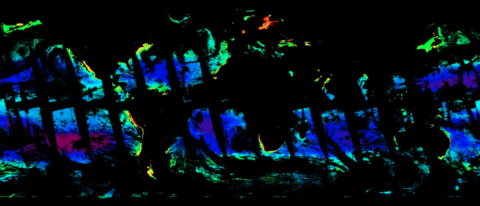
NASA EarthDATA - When NASA's Plankton, Aerosol, Cloud, ocean Ecosystem (PAC) satellite launched into space on February 8, 2024, the team was excited for the spacecraft to begin its mission. This is not only because the endeavor was more than a decade in the making and critical for understanding Earth's ocean, atmosphere, and climate change. The team was also ready for launch knowing they had expertly prepared themselves by using simulated data to test and practice using PACE's sensors and data systems to ensure that global data users would get the quality science data they need.
UMaine Scientists Aid NASA Mission to Study Climate Impact on Oceans
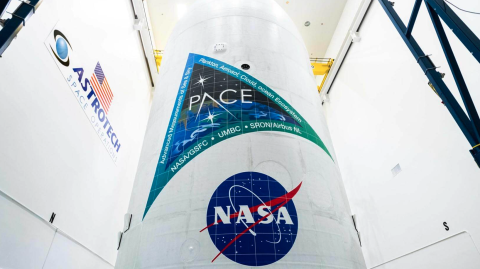
UMaine News - On Feb. 8, Emmanuel Boss watched via livestream from Maine as 15 years of work culminated in a satellite launching into space aboard a SpaceX Falcon 9 rocket. Appearing as if enveloped in a ball of fire, the satellite jetted upward through the dark sky. It was 1:33 a.m.
“The vehicle continues to perform phenomenally. All nine engines firing,” the launch host said to the crowd gathered at Space Launch Complex 40 at Cape Canaveral Space Force Station in Florida. The voices of awed observers mingled with the rumble of the rocket until, finally, it faded from view.
NASA's PACE Mission: Investigating Climate Change and Ocean Health from Space
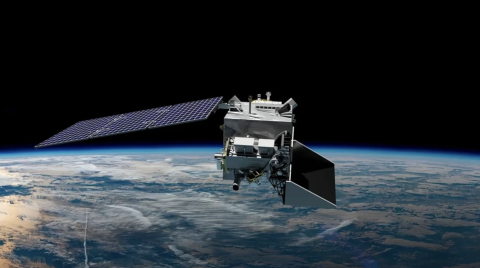
Medriva - Recently, NASA's Plankton, Aerosol, Cloud, ocean Ecosystem (PACE) satellite mission was successfully launched from Cape Canaveral Space Force Station. The spacecraft was propelled into orbit by a SpaceX Falcon 9 rocket, marking a significant step forward in our fight against climate change and our quest for understanding the Earth’s ecosystem. The PACE mission is a groundbreaking initiative that aims to study the effects of climate change on phytoplankton, a key player in the global carbon cycle and ecosystem processes.
How NASA is Keeping PACE with Climate Change

Forbes - As a former scientist at NASA Goddard Space Flight Center, I still get very excited with the successful launch of a mission focused on Planet Earth. Unfortunately, NASA’s robust Earth Sciences program and its missions often do not get the same attention as past shuttle launches, large telescopes or Mars rovers. I cannot tell you how many times this research meteorologist was asked if I supported launches or knew any astronauts. That’s why I often use this platform to broaden the narrative. Let’s talk about NASA’s Plankton, Aerosol, Cloud, ocean Ecosystem (PACE) satellite mission.
Optical Tech from NH May Help NASA Find Algal Blooms
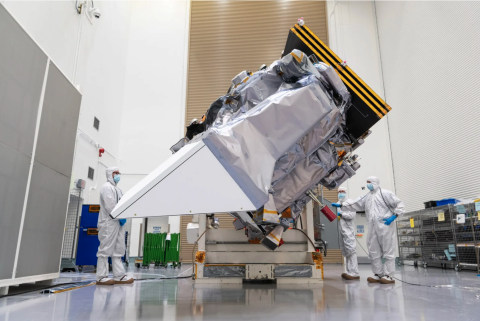
NH Business Review - A satellite with New Hampshire-made optical components that help detect microscopic ocean plankton and aerosol particles that may inform climate change is in space as of earlier this month.
Engineers at the Corning Advanced Optics plant in Keene used their foundational expertise from earlier work with private space firms and NASA to help build crucial parts of the federal space agency’s PACE satellite, which launched from Cape Canaveral, Florida, on Feb. 8 aboard a SpaceX Falcon 9 rocket after a weather delay.
People of PACE: Amir Ibrahim Understands the Atmosphere to Study the Ocean
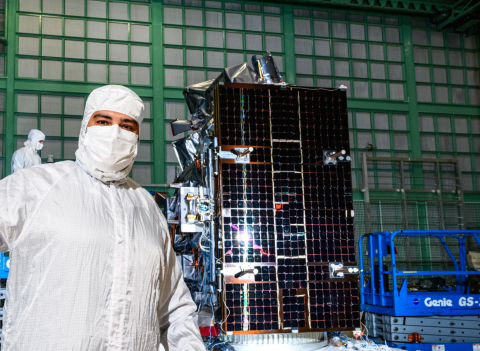
NASA GSFC - Amir Ibrahim is the PACE (Plankton, Aerosol, Cloud, ocean Ecosystem) project science lead for atmospheric correction at NASA’s Goddard Space Flight Center in Greenbelt, Maryland.
UMBC Scientists and Engineers Celebrate Launch of HARP2 Instrument on NASA's PACE Mission
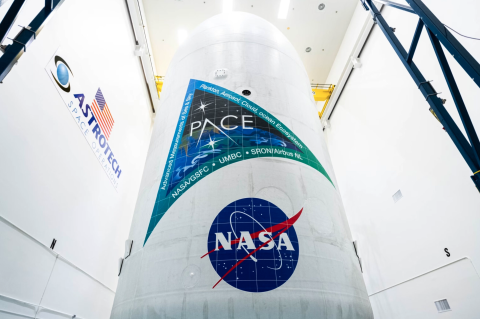
UMBC News - The third time’s the charm. Against a calm and crisp dark night sky on Florida’s Cape Canaveral last Thursday, February 8, just after 1:30 a.m., the Plankton, Aerosol, Cloud, Ocean Ecosystem (PACE) spacecraft rocketed to orbit carrying on board Hyper-Angular Rainbow Polarimeter (HARP2)―UMBC’s wide-angle imaging polarimeter. The launch marked the first time NASA deployed a university payload on a large operational Earth science space mission.
People of PACE: Bridget Seegers Sails the Seas and... and Studies Them Too!
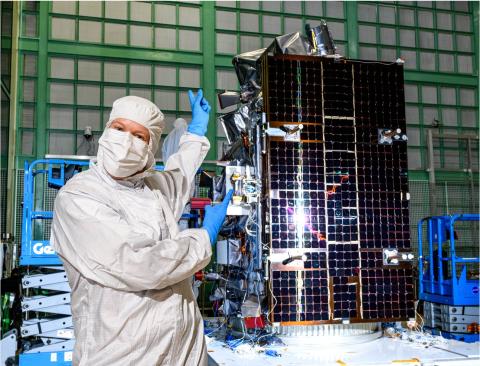
NASA GSFC - Bridget Seegers is an oceanographer at NASA’s Goddard Space Flight Center in Greenbelt, Maryland and a team member for NASA’s Plankton, Aerosol, Cloud, ocean Ecosystem (PACE) mission.
How NASA's PACE mission hopes to examine oceanic and atmospheric mysteries
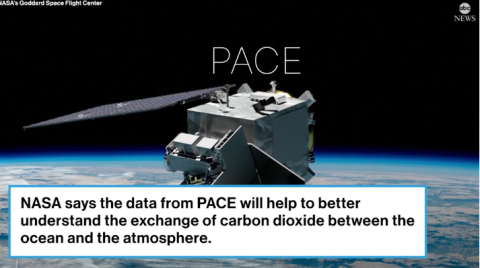
abc NEWS - While NASA is known for observing and researching outer space, the agency is also using a spacecraft to explore a frontier here on Earth -- the world's oceanic and atmospheric mysteries.
NASA's PACE spacecraft is set to launch with a SpaceX Falcon 9 rocket from Florida's Cape Canaveral Space Force Station on Thursday at 1:33 a.m., local time after being delayed from a Wednesday launch, according to the agency.
Launch of Mission to Study Earth's Atmosphere and Oceans
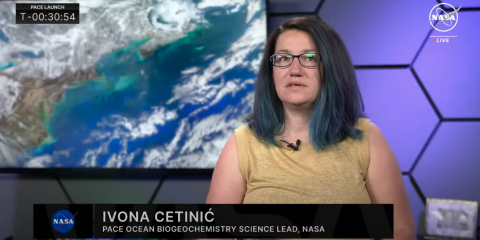
Official NASA Broadcast - Our Plankton, Aerosol, Cloud ocean Ecosystem (PACE) mission will study what makes Earth so different from every other planet we study: life itself. Three-quarters of our home planet is covered by water, and PACE’s advanced instruments will provide new ways to measure the distributions of microscopic algae known as phytoplankton near the ocean’s surface. Those observations will enhance our understanding of the crucial exchange of CO2 between the ocean and atmosphere. At the same time, PACE will help reveal how aerosols – microscopic particles in the atmosphere – and clouds control the amount of the Sun’s energy that is absorbed by Earth. Novel uses of PACE data will benefit our economy and society, and will extend and expand NASA’s long-term observations of our living planet.
NASA's New PACE Observatory Searches for Clues to Humanity's Future

WIRED - Way up in the sky and sprinkled across the seas, two of the littlest yet most influential things in the world have stubbornly guarded their secrets: aerosols and phytoplankton. Today, NASA launched its Plankton, Aerosol, Cloud, Ocean Ecosystem mission, or PACE, to unravel their mysteries. The mission’s findings could be a key to understanding how drastically the world is changing as it warms.
NASA Climate Satellite Blasts off to Survey Oceans and Atmosphere of a Warming Earth

U.S. News & World Report - NASA’s newest climate satellite rocketed into orbit Thursday to survey the world’s oceans and atmosphere in never-before-seen detail.
New NASA mission launches to observe "invisible universe" on Earth
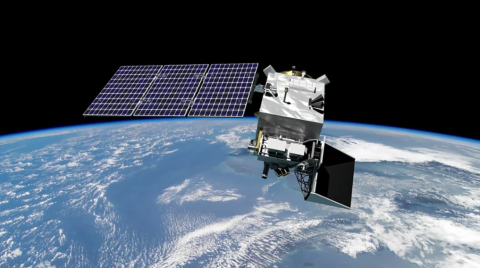
(CNN) - A revolutionary new satellite that will provide an unprecedented look at Earth’s microscopic marine life and tiny atmospheric particles has launched.
The NASA PACE, or Plankton, Aerosol, Cloud, and ocean Ecosystem, mission lifted off at 1:33 a.m. ET Thursday aboard a SpaceX Falcon 9 rocket from Cape Canaveral Space Force Station in Florida. The rocket’s booster successfully landed back on Earth about 10 minutes after launch. Just over half an hour after liftoff, the team confirmed that the spacecraft’s solar arrays deployed and it was receiving power.
Signal Acquired: NASA's PACE Spacecraft Begins Its Mission

NASA GSFC - NASA’s PACE (Plankton, Aerosol, Cloud, ocean Ecosystem) spacecraft has successfully made contact with ground stations back on Earth providing teams with early readings of its overall status, health, operation, and capabilities postlaunch.
NASA Launches New Climate Mission to Study Ocean, Atmosphere

NASA News- From its orbit hundreds of miles above Earth, NASA’s Plankton, Aerosol, Climate, ocean Ecosystem (PACE) satellite will study microscopic life in the oceans and microscopic particles in the atmosphere to investigate key mysteries of our planet’s interconnected systems.
NASA's PACE satellite will tackle the largest uncertainty in climate science

The Economist - Small things can have big effects. Take the plant plankton that populate the Earth’s oceans. When zooplankton eat them, the phytoplankton release a chemical called dimethyl sulphide (dms) and it is this that people are referring to when they speak of the “smell of the sea”.
Erin Urquhardt Talks PACE

Fox 5 San Diego - Erin Urquhart, Program Manager from NASA Water Resources talks about the PACE mission and what could be learned from the new satellite.
NASA's PACE Mission Aims to Vastly Increase Understanding of the Oceans, Atmosphere

Spaceflight Now - From the oceans to the atmosphere, there’s still quite a bit we don’t understand about our planet. NASA’s latest Earth-observing spacecraft hopes to greatly expand our knowledge of the globe in just a few years.
The PACE (Plankton, Aerosol, Cloud, ocean Ecosystem) spacecraft is the next payload to launch into orbit that will build upon more than 20 years of direct Earth observation. Dr. Nicola Fox, the associate administrator for NASA’s Science Mission Directorate, described the spacecraft as a “jewel” among the Earth-observing fleet.
Rock Climber Alex Honnold and Oceanographer Ivona Cetinić Talk New NASA Ocean Mission

NASA - Professional rock climber Alex Honnold and NASA oceanographer Ivona Cetinić talk about ocean color, plankton, climate and all things PACE. PACE is the Plankton, Aerosol, Cloud, ocean Ecosystem mission and is poised to measure the world's oceans with unprecedented resolution.
A New Satellite Could Help Scientists Unravel Some of Earth's Mysteries. Here's How.

USA Today - Imagine coloring a picture with 200 crayons instead of eight.That’s the difference in light and color that a new satellite bound for orbit will bring to the study of microscopic particles in our atmosphere and waterways, said Jeremy Werdell, a project scientist with NASA.
People of PACE: Kirk Knobelspiesse Keeps His Eyes on the Skies

NASA GSFC - Kirk Knobelspiesse is an atmospheric scientist and the project science team polarimeter lead for PACE at NASA’s Goddard Space Flight Center in Greenbelt, Maryland. He is also the polarimeter instrument scientist for the Atmosphere Observing System (AOS) constellation.


